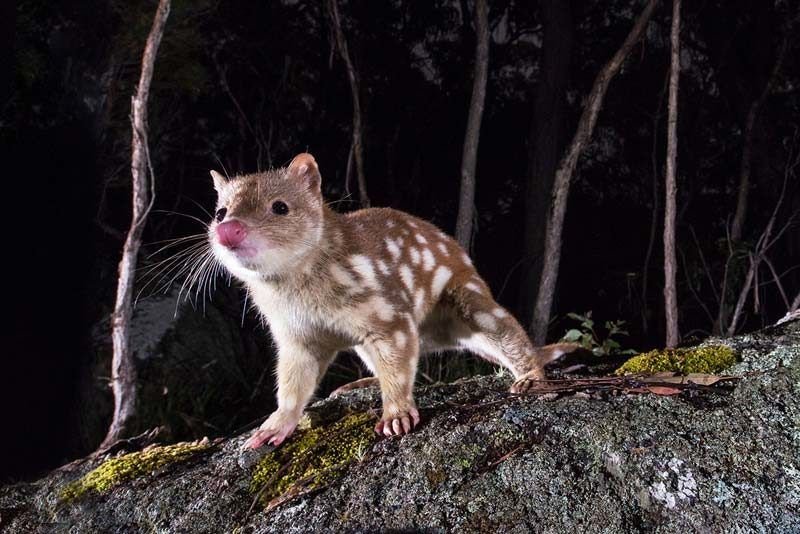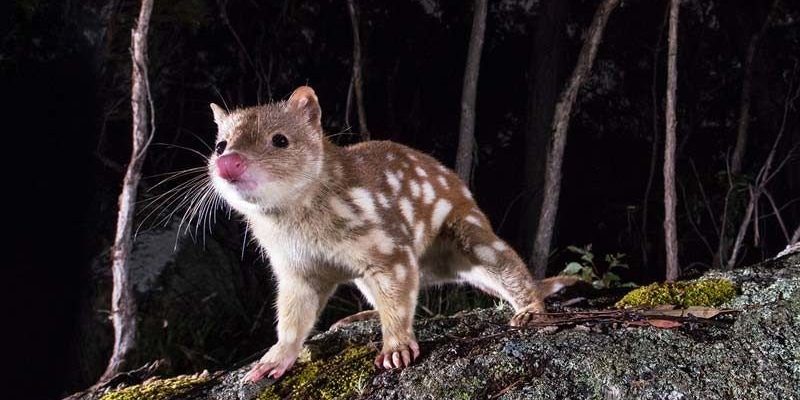
It’s easy to believe some of the myths out there—after all, in a world filled with misinformation, it can be tough to separate fact from fantasy. Maybe you’ve heard that quolls are dangerous or that they’re always nocturnal. Here’s the thing: these perceptions often stem from a lack of information. So, let’s dive into some common myths and misconceptions about quolls to clear up the confusion.
1. Quolls Are Dangerous to Humans
You might be wondering if quolls pose a threat to people. The short answer? Not at all! While it’s true that quolls are carnivorous and have sharp teeth, they are not aggressive animals. In fact, quolls are more scared of us than we are of them. Just like many wild animals, they would much rather avoid confrontation. They primarily hunt smaller prey like insects, rodents, and small birds.
It’s important to note that “dangerous” is often a relative term. Think of it this way: a house cat has sharp claws and can give a nasty scratch, but we don’t consider them dangerous pets. Quolls are similar; they play a key role in their ecosystem by controlling pest populations and are generally shy and elusive.
2. All Quolls Are Nocturnal
Another common misconception is that quolls are strictly nocturnal. While it’s true that many quoll species, like the eastern quoll, tend to be more active at night, not all of them have the same schedule. In fact, some quolls can be seen during the day, especially if food is scarce or if they’re in an area with less human disturbance.
The spotted-tail quoll, for instance, might enjoy a bit of daytime activity, particularly around meal times. So, if you think you’ll only see quolls under the cover of darkness, think again! Their activity patterns can vary greatly depending on the environment and available resources.
3. Quolls Are Related to Cats or Dogs
It’s easy to assume that quolls are closely related to traditional pets because of their physical appearance. But here’s a fun fact: quolls belong to the marsupial family, which makes them more closely related to kangaroos and koalas than to felines or canines. They fall under the Dasyuridae family, which also includes the Tasmanian devil.
This might surprise you. Their small size and spots can give them a cat-like look, but their behavior and biology are quite different. Quolls carry their young in pouches, just like kangaroos, and have a totally distinct way of life compared to our furry friends at home.
4. Quolls Are Invasive Species
Some people believe that quolls are an invasive species threatening local ecosystems, especially in places they’ve been introduced. But this is a misconception. In their native habitats, quolls have co-evolved with their ecosystems and are an essential part of the food chain.
In fact, quolls help control populations of rodents and other small animals, balancing the ecosystem. When they are introduced to new environments, however, they can face challenges, and it can sometimes be harmful. Still, it’s crucial to remember that their natural role is as beneficial predators rather than invaders.
5. Quolls Can Live Anywhere
You might think that since quolls are adaptable creatures, they can thrive in a variety of habitats. While quolls can certainly tolerate a range of environments, they have specific habitat preferences that are crucial for their survival. Quolls are often found in forests, woodlands, and heathlands, where they can find plenty of cover and food sources.
They rely on certain features like dense vegetation for shelter and nesting, as well as access to water. Destruction of their natural habitats due to logging, urban expansion, or agriculture poses a significant threat. So, while they may adapt to some changes, quolls need their specific environments for long-term survival.
6. Quolls Are Unpopular and Understudied
It’s easy to think quolls don’t get enough attention, and, honestly, they could use more love. These little guys are often overshadowed by more famous critters. However, researchers and wildlife enthusiasts are increasingly working to understand and protect them. Various conservation efforts are underway to ensure their survival, especially given their declining populations.
You might be surprised to learn that the quoll is one of Australia’s most iconic and important native species. Studying them gives us insights into ecosystem health, and protecting them helps maintain biodiversity.
7. Quolls Don’t Make Good Pets
If you’re thinking about bringing a quoll home, you might want to reconsider. While they seem cute and interesting, quolls are not domesticated animals; they have wild instincts and needs. Quolls require complex habitats, social structures, and diets that are not replicable in a home setting.
In the wild, quolls play specific roles in their ecosystem that can’t be mirrored in captivity. While it’s tempting to want a quoll as a pet, it’s crucial to respect their nature and understand that they belong in the wild, not in a living room.
8. Quolls Are Going Extinct
While it’s a harsh reality that some quoll species face precarious situations, saying they are all doomed to extinction is misleading. Conservation programs are actively working to protect their habitats, educate the public, and monitor populations.
The eastern quoll, for instance, has seen population declines, but efforts are being made to restore its numbers. On the flip side, the northern quoll is under threat, but initiatives are in place to raise awareness and help stabilize its population. Keeping ecosystems healthy and supporting conservation is vital for these unique creatures.
In conclusion, quolls are more fascinating than many myths suggest. They are not dangerous, strictly nocturnal, or related to cats and dogs. Instead, they play an important role in their ecosystems and deserve our respect and protection. By understanding the truth behind common misconceptions, we can appreciate these small marsupials even more. The next time you hear about quolls, you’ll know just how special they are in the rich tapestry of Australia’s wildlife.

